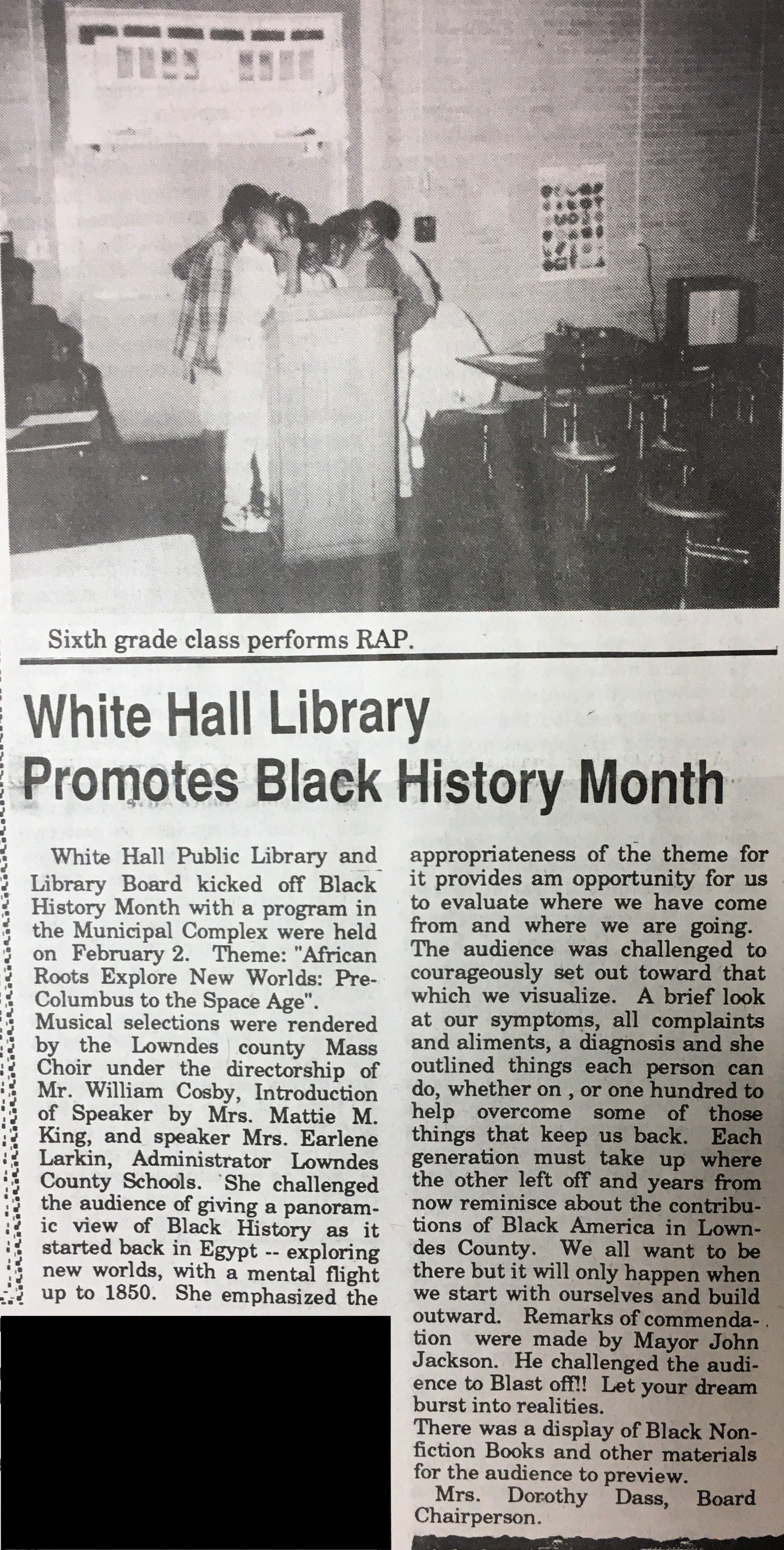Technology to help promote Lowndes Interpretive Center
Published 5:59 pm Friday, January 3, 2014

Posters such as this one showing an exhibit at the Lowndes Interpretive Center with a QR code that can be scanned by Smartphones are part of the new campaign to promote national parks in Alabama including the Selma to Montgomery National Historic Trail with interpretive centers in White Hall and Selma.
The Lowndes Signal
New posters at town halls, libraries, schools and businesses with special barcodes, which can be scanned by Smartphones, will help promote the Lowndes Interpretive Center in White Hall.
According to Patricia Butts, management analyst/public information officer for the Tuskegee Institute National Historic Site, the Tuskegee Airmen National Historic Site and the Selma to Montgomery National Historic Trail, with interpretive centers in Selma and White Hall, “QR is short for Quick Response also known as mobile tagging.”
She said, “QR codes make everything interactive.” And she said the Tuskegee Institute NHS, Tuskegee Airmen NHS and Selma to Montgomery NHT are extending their reach using mobile tag posters, which she said make website access “available anywhere via mobile devices with a simple scan.”
Butts said, “This campaign is designed to reach new audiences and engage visitors with the use of technology and social media. Download a poster or share via your Facebook or Twitter. Our ultimate goal is to bring more people to parks and enhance the visitor experience.”
And she asks everyone, “Help us get the word out about these wonderful national treasures.”
Butts explained that when someone uses their Smartphone or mobile device to tag (scan) a poster of the Selma to Montgomery National Historic Trail, they can navigate the website.
She said the QR code on the poster is like that barcode one sees on items in stores. And she said when one scans the QR code, “Instead of telling you how much something costs, it can take you to a URL, which is the website.”
She said if one goes to a store that happens to have one of the posters in the window, a person can use their Smartphone to scan the code and what will pop up is the website for the Selma to Montgomery Trail “that tells you all about the site… when to visit, directions, everything, and you can navigate it right on you cell phone for iPad.”
Butts said the reason for this is “so that passersby or people who travel to the area who may have not known there was a national park there can tag that code, see where they are and maybe visit.”
She said any cell phone that can take photographs has the capability to get apps to access the code and website.
Butts said she is hoping that businesses will post the posters. And she said she will send them to schools where the students or their parents can scan the tag (code) “because it is a fun thing to do.”
She also wants the public to post the posters on their social media such as Facebook.
“We want to use technology to spread the word about the parks. Most people have a Smartphone. So, we’re letting technology do the heavy lifting,” Butts said.
And she said, “We just want to use social media to spread the word about the wonderful treasures of the national parks in Alabama.”
Butts is heading up this promotional campaign. She explained that everything is so expensive now, that “We have to get on board with the free technology that we have available so we can help spread the word about these great places.”
Butts said she made the posters, and the one for the Selma to Montgomery Historic Trail features an exhibit at the Lowndes Interpretive Center.
The National Park Service operates the Tuskegee Institute National Historic Site, the Tuskegee Airmen National Historic Site and the Selma to Montgomery National Historic Trail, with interpretive centers in Selma and White Hall.





